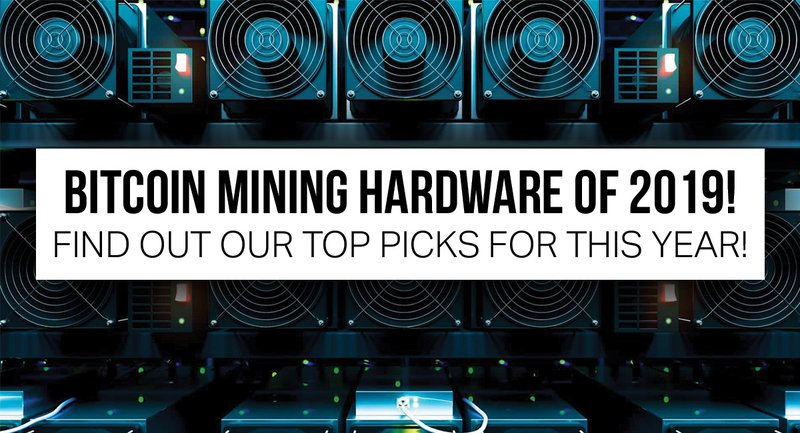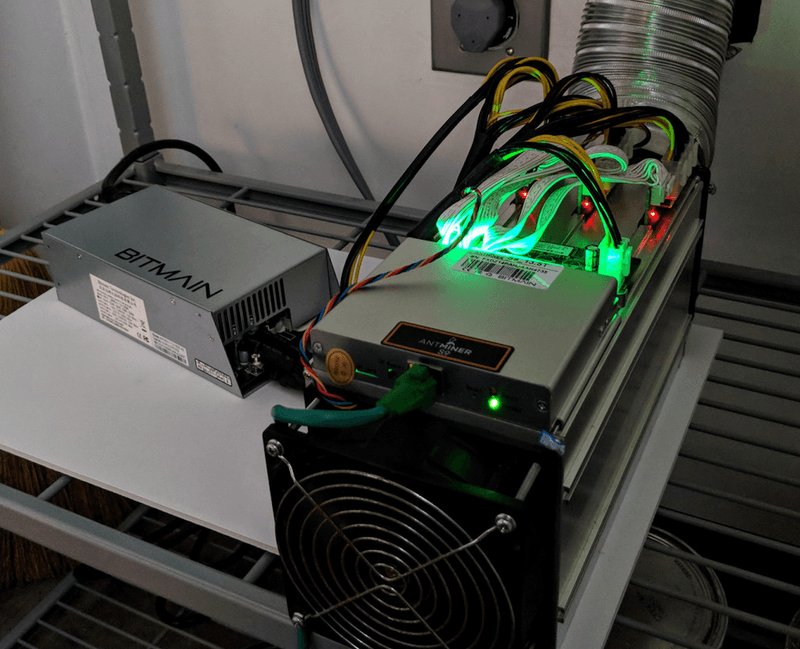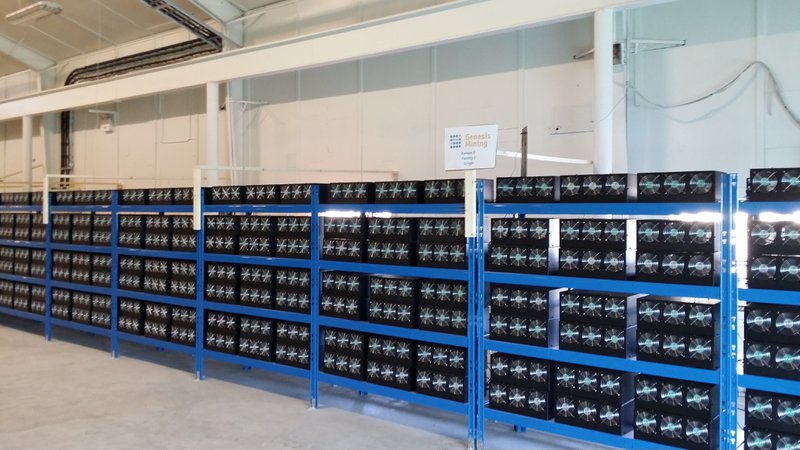
5 of the Best Bitcoin Mining Hardware of 2019!
Bitcoin mining requires highly energy-hungry hardware and a firm understanding of the underlying blockchain technology that drives the Bitcoin network. The Bitcoin mining arms race, however, has created a specialized breed of computational hardware dedicated solely to solving Bitcoin blocks. Selecting the right Bitcoin mining hardware in 2019 requires careful planning and consideration.
What Bitcoin Mining Hardware?
Bitcoin mining has evolved far beyond the 2008 origins of the Bitcoin blockchain itself. In the earliest days of the Bitcoin blockchain, it was possible to mine Bitcoin on any relatively powerful computer via CPU. As the Bitcoin network grew, however, the process of mining began to demand ever-increasing computational power as more miners began to contribute to the hashing process.
To keep up with this computational demand, miners began to mine using the more powerful GPUs of computers due to the computational advantage they hold over GPUs. By 2011, options such as field-programmable gate arrays, or FPGAs, became available, offering increased efficiency and power. The entrance of FPGA mining saw the launch of the first large-scale Bitcoin mining farms.
Today, Bitcoin miners use Application-Specific Integrated Circuit, or ASIC devices, to mine. These devices are designed from the ground up for the sole purpose of Bitcoin mining. The high level of specialization offered by ASIC units allows miners to solve Bitcoin blocks faster with less electricity compared to any other method of Bitcoin mining.
The modern Bitcoin mining industry is driven by the ASIC arms race, with successive generations of ASIC hardware delivering greater computational efficiency than the last — increasing mining difficulty and making ASIC mining the only truly cost-effective method of solving Bitcoin blocks at scale.
What to Consider When Selecting Bitcoin Mining Hardware
There are a number of variables to consider when selecting Bitcoin mining hardware:
Price
The price of mining hardware is typically the first factor to consider. As a rule, cheaper mining hardware delivers lower operational efficiency and computational power and is far less durable. The cost of mining hardware should be incorporated into profitability analyses, with an emphasis on the expected functional lifespan of the device.
Efficiency
In the world of Bitcoin mining, the laws of thermodynamics are paramount — the core function of ASIC hardware is to convert electricity into BTC. It’s essential to select the most energy efficient Bitcoin mining hardware available, ensuring that electricity is transformed into Bitcoin at the most efficient rate possible.
Hash Rate
Hash rate is a driving factor in the effectiveness of Bitcoin mining hardware. Put simply, the higher the hash rate of the hardware, the more likely it is that the miner will solve a block. Higher hash rate devices cost more.
Bitcoin Mining Hardware Comparison
The Dragonmint T1 represents the current peak of operational efficiency in the mining industry. Manufactured by Halong mining, the Dragonmint T1 hash rate tops out at 16 TH/s and requires a 1600 W power supply, The Dragonmint T1 power consumption, however, reaches only 0.075J/GH.
Priced at $2,700 USD, the 16T is far from the cheapest mining unit available on the market today but is one of the only available units that can deliver positive ROI given current Bitcoin prices. The Dragonmint T1 also implements the ASICBOOST algorithm, which boasts a 20% efficiency boost.
Developed by Bitmain, (the world’s largest Bitcoin mining organization who generated over $1 billion USD in profits in the first quarter of 2018 alone), the Bitmain Antminer S9 is one of the most popular mining hardware options on the market. The Antminer S9 hash rate clocks in at 14 TH/s.
The Antminer S9 Hydro, however, integrates a water-cooled system that allows the unit to reach a hash rate of 18 TH/s with a power consumption of 1728 Watts and is priced at roughly 1,080 USD, representing a reasonable entry point for hobby miners.

Released in November 2018, the Bitmain Antminer S15 delivers an impressive hash rate of up to 23 terahash per second. The S15 represents Bitmain’s first 7nm ASIC and offers two different modes — energy saving and high performance.
The Bitmain Antminer S15 high-performance mode consumers 1596 W, but boasts a hash rate of 28 TH/s with a power efficiency of 57 J/TH. The energy saving mode, however, is able to sustain 17 TH/s with a power consumption of just 850 W, suitable for miners seeking to reduce heat and noise or miners that lack the infrastructure necessary to support high power consumption.
The BitFury Tardis is one of the highest-powered hardware devices available on the market. Clocking in at 80 TH/s, the Tardis is not designed for the average Bitcoin mining hobbyist and is instead presented as an “enterprise-grade mining server.”
Bitfury doesn’t publicize the price of the Tardis, but with resellers capturing upwards of $7,000 per unit, it’s arguably one of the most expensive options available.
Hosted Mining

Bitcoin mining hardware represents a significant investment, and in many cases takes a significant amount of time to deliver a solid return on investment. The added cost of operational costs, when added to the price of mining hardware, can skew profitability projections into the negative — especially for individuals interested in mining regions with prohibitively expensive electricity.
Hosted mining, however, provides miners with the option to purchase mining equipment directly from a provider and have that equipment set up, monitored, and maintained at a secure facility. This allows miners to mine Bitcoin without the additional difficulties of managing electricity, storage, security, and maintenance.
Importantly, hosted mining solutions allow miners access and alter the exact specifications of their mining equipment and ensure that mined cryptocurrency is never held or transmitted by a third party, lessening security risks. While hardware purchased from hosted mining solution providers is marginally more expensive than self-hosted hardware, the significant savings it offers combined with extensive support and operational efficiency gains make hosted mining a highly attractive option to miners seeking to maximize their return on investment regardless of market action. To learn more about colocation mining check out our in-depth blog post.
Newsletter!
Join our weekly newsletter for the freshest Cryptocurrency, Bitcoin Mining and Blockchain news!

 Miningstore is your turn-key cryptocurrency mining solution. We offer top-class hosting services, facilitate large-scale mining investments and can quickly source mining hardware of any type.
Miningstore is your turn-key cryptocurrency mining solution. We offer top-class hosting services, facilitate large-scale mining investments and can quickly source mining hardware of any type.